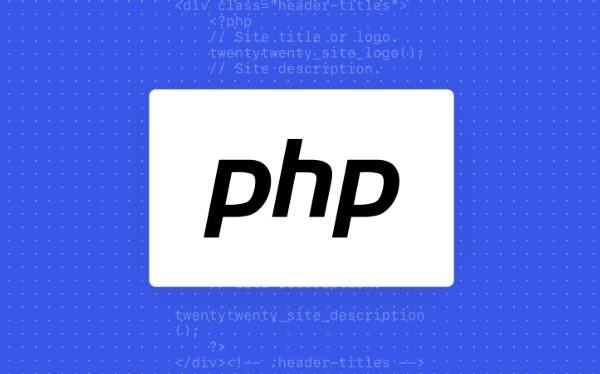The error "Cannot modify header information - headers already sent" appears because there is already output of content before attempting to send HTTP header information in PHP. 1. Check whether there are spaces or content at the beginning of the PHP file to ensure that there are no characters before <?php ; 2. Make sure that echo, print or include output is not used before calling header(), and the ob_start() buffered output can be enabled; 3. Check whether the file is in UTF-8 without BOM format to avoid hidden characters triggering output; 4. Turn off the display of debug information and fix all warnings and notices to prevent accidental output.

When the error "Cannot modify header information - headers already sent" appears, it means that when you try to send HTTP header information in PHP (such as using header() function), the content has been output to the browser. At this time, it is too late to modify the header information.

Although this problem seems scary, it is actually quite common, and the reason is basically concentrated on "the output that shouldn't have occurred in advance."
1. Check if there are spaces or content in front of <?php
This is the most common pitfall: if there are blank lines, spaces or HTML content at the beginning of your PHP file, these will be treated as output content, causing the header to fail to send.

Error example:
<?php header('Location: /');
Note that there is a blank line in front of <?php in the above code, which will cause the header to report an error.

?Solution:
- Open the file with the problem and check whether there are any characters at the beginning.
- If it is a pure PHP file, you can omit the
?>end tag to avoid accidentally adding spaces afterwards.
2. The output buffer is not turned on, and the content is directly echo or print
If you use echo , print , include to load HTML content, and even spaces and HTML tags before calling header() , the output will be triggered, causing the header to fail.
Error example:
echo "Login successfully"; header('Location: dashboard.php');
This code will report an error because echo has sent the content.
?Solution:
- Check your script logic to make sure there is no output before calling
header(). - You can use
ob_start()to enable output buffering before the script starts, delaying the output content.
3. Problems with file encoding or BOM header
Sometimes you see that the beginning of the file is fine, but you still report an error, which may be a problem with the file saving format. The encoding of UTF-8 with BOM inserts a hidden byte order mark (BOM) at the beginning of the file, and the PHP parser does not automatically ignore it, which is equivalent to outputting the content in advance.
?Solution:
- Use an editor (such as VS Code, Notepad) to save the file as UTF-8 without BOM format.
- Check whether multiple PHP files are combined with the BOM when outputting.
4. Debug information or warnings are output in advance
Sometimes, PHP error messages, warning or notice can also trigger output, especially when display_errors is enabled on your server.
for example:
Warning: Undefined variable $user in login.php on line 10
This type of warning itself will cause output, and it will also cause an error once it appears before header() .
?Solution:
- The development environment can enable error display, but it needs to be turned off after going online:
ini_set('display_errors', 0);
- Fix all warnings and notices to avoid unexpected output.
Basically these common situations. When encountering the header already sent error, priority is given to checking the output source. Solving the problem from the source is more effective than turning around.
The above is the detailed content of PHP header already sent error. For more information, please follow other related articles on the PHP Chinese website!

Hot AI Tools

Undress AI Tool
Undress images for free

Undresser.AI Undress
AI-powered app for creating realistic nude photos

AI Clothes Remover
Online AI tool for removing clothes from photos.

Clothoff.io
AI clothes remover

Video Face Swap
Swap faces in any video effortlessly with our completely free AI face swap tool!

Hot Article

Hot Tools

Notepad++7.3.1
Easy-to-use and free code editor

SublimeText3 Chinese version
Chinese version, very easy to use

Zend Studio 13.0.1
Powerful PHP integrated development environment

Dreamweaver CS6
Visual web development tools

SublimeText3 Mac version
God-level code editing software (SublimeText3)

Hot Topics
 How to upgrade PHP version?
Jun 27, 2025 am 02:14 AM
How to upgrade PHP version?
Jun 27, 2025 am 02:14 AM
Upgrading the PHP version is actually not difficult, but the key lies in the operation steps and precautions. The following are the specific methods: 1. Confirm the current PHP version and running environment, use the command line or phpinfo.php file to view; 2. Select the suitable new version and install it. It is recommended to install it with 8.2 or 8.1. Linux users use package manager, and macOS users use Homebrew; 3. Migrate configuration files and extensions, update php.ini and install necessary extensions; 4. Test whether the website is running normally, check the error log to ensure that there is no compatibility problem. Follow these steps and you can successfully complete the upgrade in most situations.
 How do I prevent cross-site request forgery (CSRF) attacks in PHP?
Jun 28, 2025 am 02:25 AM
How do I prevent cross-site request forgery (CSRF) attacks in PHP?
Jun 28, 2025 am 02:25 AM
TopreventCSRFattacksinPHP,implementanti-CSRFtokens.1)Generateandstoresecuretokensusingrandom_bytes()orbin2hex(random_bytes(32)),savethemin$_SESSION,andincludetheminformsashiddeninputs.2)ValidatetokensonsubmissionbystrictlycomparingthePOSTtokenwiththe
 PHP beginner guide: Detailed explanation of local environment configuration
Jun 27, 2025 am 02:09 AM
PHP beginner guide: Detailed explanation of local environment configuration
Jun 27, 2025 am 02:09 AM
To set up a PHP development environment, you need to select the appropriate tools and install the configuration correctly. ①The most basic PHP local environment requires three components: the web server (Apache or Nginx), the PHP itself and the database (such as MySQL/MariaDB); ② It is recommended that beginners use integration packages such as XAMPP or MAMP, which simplify the installation process. XAMPP is suitable for Windows and macOS. After installation, the project files are placed in the htdocs directory and accessed through localhost; ③MAMP is suitable for Mac users and supports convenient switching of PHP versions, but the free version has limited functions; ④ Advanced users can manually install them by Homebrew, in macOS/Linux systems
 How to combine two php arrays unique values?
Jul 02, 2025 pm 05:18 PM
How to combine two php arrays unique values?
Jul 02, 2025 pm 05:18 PM
To merge two PHP arrays and keep unique values, there are two main methods. 1. For index arrays or only deduplication, use array_merge and array_unique combinations: first merge array_merge($array1,$array2) and then use array_unique() to deduplicate them to finally get a new array containing all unique values; 2. For associative arrays and want to retain key-value pairs in the first array, use the operator: $result=$array1 $array2, which will ensure that the keys in the first array will not be overwritten by the second array. These two methods are applicable to different scenarios, depending on whether the key name is retained or only the focus is on
 How to use php exit function?
Jul 03, 2025 am 02:15 AM
How to use php exit function?
Jul 03, 2025 am 02:15 AM
exit() is a function in PHP that is used to terminate script execution immediately. Common uses include: 1. Terminate the script in advance when an exception is detected, such as the file does not exist or verification fails; 2. Output intermediate results during debugging and stop execution; 3. Call exit() after redirecting in conjunction with header() to prevent subsequent code execution; In addition, exit() can accept string parameters as output content or integers as status code, and its alias is die().
 Applying Semantic Structure with article, section, and aside in HTML
Jul 05, 2025 am 02:03 AM
Applying Semantic Structure with article, section, and aside in HTML
Jul 05, 2025 am 02:03 AM
The rational use of semantic tags in HTML can improve page structure clarity, accessibility and SEO effects. 1. Used for independent content blocks, such as blog posts or comments, it must be self-contained; 2. Used for classification related content, usually including titles, and is suitable for different modules of the page; 3. Used for auxiliary information related to the main content but not core, such as sidebar recommendations or author profiles. In actual development, labels should be combined and other, avoid excessive nesting, keep the structure simple, and verify the rationality of the structure through developer tools.
 How do I access session data in PHP?
Jun 30, 2025 am 01:33 AM
How do I access session data in PHP?
Jun 30, 2025 am 01:33 AM
To access session data in PHP, you must first start the session and then operate through the $_SESSION hyperglobal array. 1. The session must be started using session_start(), and the function must be called before any output; 2. When accessing session data, check whether the key exists. You can use isset($_SESSION['key']) or array_key_exists('key',$_SESSION); 3. Set or update session variables only need to assign values ??to the $_SESSION array without manually saving; 4. Clear specific data with unset($_SESSION['key']), clear all data and set $_SESSION to an empty array.
 What are recursive functions in PHP?
Jun 29, 2025 am 02:02 AM
What are recursive functions in PHP?
Jun 29, 2025 am 02:02 AM
Recursive functions refer to self-call functions in PHP. The core elements are 1. Defining the termination conditions (base examples), 2. Decomposing the problem and calling itself recursively (recursive examples). It is suitable for dealing with hierarchical structures, disassembling duplicate subproblems, or improving code readability, such as calculating factorials, traversing directories, etc. However, it is necessary to pay attention to the risks of memory consumption and stack overflow. When writing, the exit conditions should be clarified, the basic examples should be gradually approached, the redundant parameters should be avoided, and small inputs should be tested. For example, when scanning a directory, the function encounters a subdirectory and calls itself recursively until all levels are traversed.






